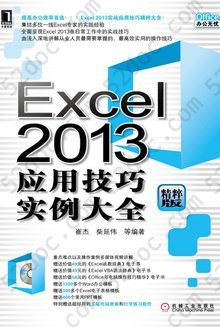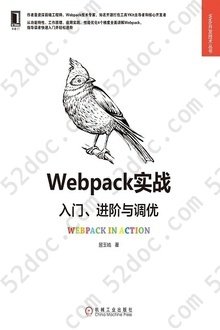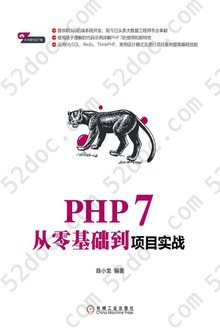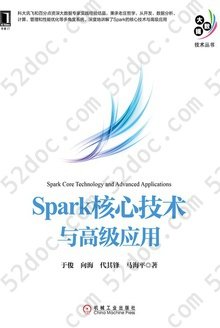注重体验与质量的电子书资源下载网站
分类于: 其它 职场办公
简介
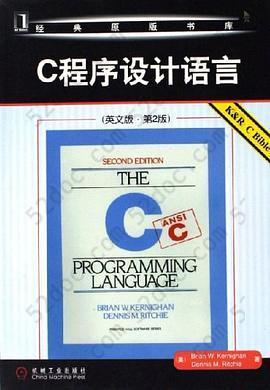
C程序设计语言: (英文版·第2版) 豆 9.6分
资源最后更新于 2020-08-23 08:21:12
作者:Brian W. Kernighan
出版社:机械工业出版社
出版日期:2006-01
ISBN:9787111196266
文件格式: pdf
标签: c 编程 C语言 计算机 经典 C programming K&R
简介· · · · · ·
在计算机发展的历史上,没有哪一种程序设计语言像C语言这样应用广泛。本书是C语言的设计者之一Dennis M.Ritchie和著名计算机科学家Brian W.Kernighan合著的一本介绍C语言的权威经典著作。我们现在见到的大量论述C语言程序设计的教材和专著均以此书为蓝本。本书第1版中介绍的C语言成为后来广泛使用的C语言版本——标准C的基础。人们熟知的“hello,World"程序就是由本书首次引入的。现在,这一程序已经成为众多程序设计语言入门的第一课。
第2版根据1987年制定的ANSIC标准做了适当的修订,引入了最新的语言形式,并增加了新的示例。通过简洁的描述、典型的示例,作者全面、系统、准确地讲述了C语言的各个特性以及程序设计的基本方法。对于计算机从业人员来说,本书是一本必读的程序设计语言方面的参考书。
目录
序第1版序IntroductionChapter 1. A Tutorial Introduction 1.1 Getting Started 1.2 Variables and Arithmetic Expressions 1.3 The For Statement 1.4 Symbolic Constants 1.5 Character Input and Output 1.6 Arrays 1.7 Functions 1.8 Arguments--Call by Value 1.9 Character Arrays 1.10 External Variables and ScopeChapter 2. Types, Operators, and Expressions 2.1 Variable Names 2.2 Data Types and Sizes 2.3 Constants 2.4 Declarations 2.5 Arithmetic Operators 2.6 Relational and Logical Operators 2.7 Type Conversions 2.8 Increment and Decrement Operators 2.9 Bitwise Operators 2.10 Assignment Operators and Expressions 2.11 Conditional Expressions 2.12 Precedence and Order of Evaluation Chapter 3. Control Flow 3.1 Statements and Blocks 3.2 If-Else 3.3 Else-If 3.4 Switch 3.5 Loops--While and For 3.6 Loops-Do-while 3.7 Break and Continue 3.8 Goto and LabelsChapter 4. Functions and Program Structure 4.1 Basics of Functions 4.2 Functions Returning Non-integers 4.3 External Variables 4.4 Scope Rules 4.5 Header Files 4.6 Static Variables 4.7 Register Variables 4.8 Block Structure 4.9 Initialization 4.10 Recursion 4.11 The C PreprocessorChapter 5. Pointers and Arrays 5.1 Pointers and Addresses 5.2 Pointers and Function Arguments 5.3 Pointers and Arrays 5.4 Address Arithmetic 5.5 Character Pointers and Functions 5.6 Pointer Arrays; Pointers to Pointers 5.7 Multi-dimensional Arrays 5.8 Initialization of Pointer Arrays 5.9 Pointers vs. Multi-dimensional Arrays 5.10 Command-line Arguments 5.11 Pointers to Functions 5.12 Complicated DeclarationsChapter 6. Structures 6.1 Basics of Structures 6.2 Structures and Functions 6.3 Arrays of Structures 6.4 Pointers to Structures 6.5 Self-referential Structures 6.6 Table Lookup 6.7 Typedef 6.8 Unions 6.9 Bit-fieldsChapter 7. Input and Output 7.1 Standard Input and Output 7.2 Formatted Output--Printf 7.3 Variable-length Argument Lists 7.4 Formatted Input-Scanf 7.5 File Access 7.6 Error Handling--Stderr and Exit 7.7 Line Input and Output 7.8 Miscellaneous FunctionsChapter 8. The UNIX System Interface 8.1 File Descriptors 8.2 Low Level I/O-Read and Write 8.3 Open, Creat, Close, Unlink 8.4 Random Access--Lscek 8.5 Example--An Implementation of Fopen and Getc 8.6 Example--Listing Directories 8.7 Example--A Storage AllocatorAppendix A. Reference Marital AI Introduction A2 Lexical Conventions A3 Syntax Notation A4 Meaning of Identifiers A5 Objects and Lvalues A6 Conversions A7 Expressions A8 Declarations A9 Statements AI0 External Declarations All Scopeand Linkage A12 Preprocessing A13 GrammarAppendix B. Standard Library B1 Input and Output: <stdio.h> B2 Character Class Tests: <ctype.h> B3 String Functions: <string.h> B4 Mathematical Functions: <math.h> B5 Utility Functions: <stdlib.h> B6 Diagnostics: <assert.h> B7 Variable Argument Lists: <stdarg.h> B8 Non-local Jumps: <setjmp.h> B9 Signals: <signal.h> B10 Date and Time Functions: <time.h> BI 1 Implementation-defined Limits: <limits.h> and <float.h>Appendix C. Summary of ChangesIndex



